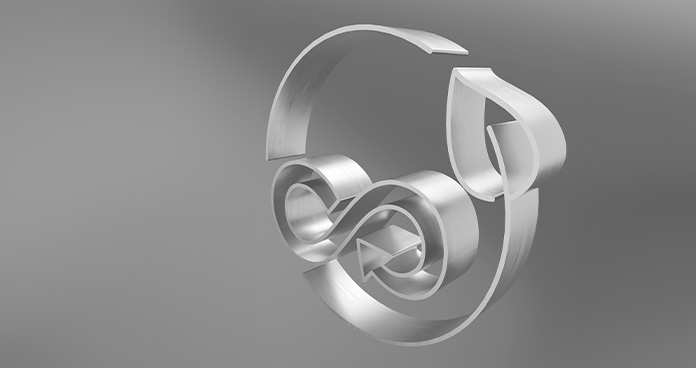
Steel is considered a permanent material thanks to its longevity, ease of repairability, and the possibility of converting it as scrap any number of times into new steel products. As such, steel can already make an important contribution to the circular economy that the European Union aims to achieve by 2050.
Decoupling the economy from the consumption of resources requires both extending the useful life of products and repurposing them in different ways at the end of their service life. voestalpine is responding to this challenge. Hence own and third-party scrap have become a primary raw material for the Group, for one, in connection with conventional technology, where scrap is used especially in the Linz and Donawitz steel plants and, for another, in connection with the envisioned shift to electric furnaces at these two facilities (also see the “Climate Action” chapter).
Furthermore, scrap is already being used to manufacture special steel grades in the electric furnaces of the High Performance Metals Division.
Overall, the recycling rate measured against product output was 27.4% in 2023 (2022: 27.7%). This metric concerns the product’s iron content that is derived from secondary raw materials such as scrap iron.
Recycling rate
As a percentage of product output
voestalpine implements numerous measures to promote internal circularity as well as external utilization of residual products and waste from both the production plants and downstream facilities. For one, process management in the integrated steel mills is subject to continual improvement. For another, internally and externally generated products as well as residual products and waste such as scrap and plastic are re(used) in the production plants.
By-products such as steel mill dust or slag are utilized in the zinc industry or in the production of cement.
Agreements with third parties serve to ensure professional and state-of-the-art downstream processing in connection with the transfer of waste to them. Waste streams are monitored and accounted for in accordance with legal requirements and on an electronic basis.
The specific volume of hazardous waste in calendar year 2023 was 20 kg per ton of product (2022: 29 kg/t) and that of non-hazardous waste 169 kg per ton of product (2022: 184 kg/t).
Waste volume
kt
Specific waste volume
kg/t product

